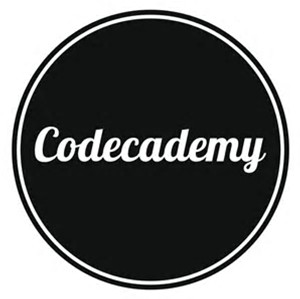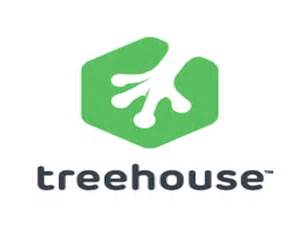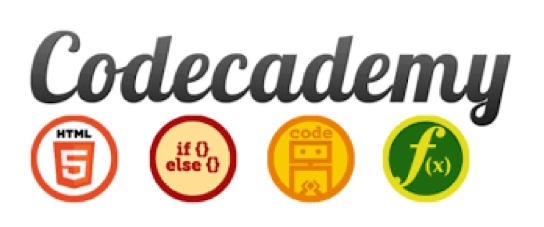Most people use smartphones or laptops to communicate with one another and are aware of the fact that programming is a significant component behind making these things work. The issue at hand is that the majority of these people do not know how to write code. Two reasons for this would be that the person has no interest in programming or has never been exposed to it in a user friendly environment. Exposure is key when it comes to cultivating an interest in a specific field, especially in the realm of programming. Having access and the ability to apply what you have learned in a programming-based environment can be difficult and hard to find, but this issue has already been solved.
Codecademy is a free online interactive platform that teaches its users the fundamentals of programming. This site hosts multiple tutorials and activities allowing a user to learn more than twelve essential programming languages. Codecademy launched on August 19, 2011 and within the first five months the site had over 200,000 users. Zach Sims, the founder of Codecademy, explains that for many users the interactive coding tutorials in the browser were far superior to books or videos (MSNBC). Today Zach’s website has more than 25 million users with the backing of many venture capital and angel firms such as Thrive Capital, Index Ventures, Founder Collective and SVAngel (Codecademy).
In order to keep the website running smoothly, Codecademy has a team of over 35 employees. These employees work hand-in-hand to grow the company’s platform and expand upon the content already on the website. For example, Mike Jewett and Michael Doliner are both curriculum designers at Codecademy. They are tasked with the role of developing educational material for the website and evaluating how well it would work (Study). Jamie Wittenberg, Alex Clark, and Reed Spool are all curriculum engineers at Codecademy tasked with implementing the curriculum provided by the designers (Codecademy). The ideal end product of this collaboration between workers in these fields would be a well formulated online course where users feel engaged from going through the tutorials and constantly receiving active feedback from the online compiler.
As I type the word “code” into Google, Codecademy is presented as the second hyperlink on my screen. This means that Codecademy is a well advertised and promoted website. After clicking the link and logging onto the site, I am presented with a scroll view of all the courses offered. With each course label, a short description is attached detailing what that specific course teaches and the estimated amount of time it should take to complete the course. Something interesting that I noticed is that the first course presented to me in the scroll view was a course to learn HTML & CSS. Being that HTML/CSS is an easy skill to learn, it is clear why Codecademy would want its new users to dive into it first before moving onto to more difficult courses. After clicking on a course, I am presented with the overview and syllabus. The overview briefly explains what I will be learning and the syllabus details all of the topics covered in this course as well as a percentage detailing my progression through each of the topics. The way that the syllabus is structured allows me to click on any of its categories and start learning about any topic that I want.
After clicking the first topic on the syllabus, I am presented with a friendly user interface which splits my screen into three main components. On the left side of my screen, I see an explanation given in order to help me familiarize myself with the new syntax and a set of instructions on what I am expected to do. In the middle of my screen is the HTML file. In this section, this is where I am expected to write my code. On the right side of the screen, there is a small window that shows me the output of my code after it is compiled. After each topic is completed, there are short quizzes and challenges where users are encouraged to apply what they have learned from previous lessons and build a fun program. What’s great is that all code can be shared and manipulated between users and there is no restriction on what a user does with his/her newly developed skill set.
Codecademy’s simplistic design and interactive programming lessons allow its services to be used at ease by those who are willing to put in the time and effort. Although the majority of users on this website are between the ages of 13 and 30, it is clear that this company wants people of all ages to learn how to program and wants to be viewed as an educational institution (MSNBC). As Codecademy puts it, “We are building the education the world needs – the first truly net native education” (Codecademy).
Due to the fact that the majority of the Codecademy’s services are engaging and free to access, this has given millions of people across the globe the ability to learn to program from the comfort of their computers. This has resulted in the company having more than 70% of its users from outside the United States (MSNBC). Not only is Codecademy’s impact measured through the amount of people who have used its resources, but it can also be seen through the countless products and programs that the company’s users have built.
Tommy Nicholas changed his career after learning to code on Codecademy. He was able to develop his own website called Coffitivity which was listed as one of the 50 best websites built in 2013 (Barrett). With this success Tommy was able to grow his website into a company and develop a platform with over 10,000 daily visitors (CushingR).
Martha Chumo is from Kenya and she landed a job as a developer after quitting her internship to learn programming through Codecademy. Martha had never had a computer all to herself, but after searching through the web she realized her potential with programming. This ultimately resulted in her getting a job and impacted her future goals. Also, although she had initially wanted to go to medical school she has chosen to spend a year to explore software development instead (Codecademy).
When I was 14 years old I developed my first mobile application. It was a web based application with the goal of improving the ways in which students and teachers interact and collaborate with one another. The application was called SkooBrik and it had a friendly user interface that allowed students and teachers to collaborate with one another in real time. After developing this application, it was demoed at NASDAQ where it was awarded first place. This was great news to me, but the reality of the situation was that if I did not have Codecademy to turn to, this application would have never been developed. Since I was easily jaded by reading development books and watching online videos, Codecademy proved to be the best teacher I had in programming. Through the resources that Codecademy provided me with at a young age and the resulting success, this propelled me to pursue further development projects and startup work throughout high school. I ended up graduating high school with two mobile app startups under my name and one of my iOS applications had achieved over 25,000 downloads. This application was a multiplayer game called The Great Escape where players were placed in a maze and had to compete to be the first one to escape.
From my personal experience and resulting success, it is clear that if this website had not been around while I was growing up, I would not have been able to cultivate my interest in programming at a young age. Codecademy’s friendly user interface and simple programming tutorials not only allowed me to learn programming fundamentals, but I was also able to develop a strong interest in writing code. Codecademy was successful in providing me a great initial experience and due to this, I have maintained a positive mindset towards programming.



There are many competitors to Codecademy such as Treehouse and CodeSchool. What allows Codecademy to stay on top of its competitors is the fact that its platform can be geared both towards those who have little to no programming experience at all and to those with a programming background. Codecademy is effective in teaching rudimentary programming concepts and from my experience on this website, this has proven to work well. CodeSchool is similar to Codecademy, but most of the courses that this company offers are not free. Also, the online syllabus provided by CodeSchool is a bit confusing to use since it incudes complex programming concepts that a person new to programming would not understand. Treehouse is very different since its platform is based around tutorial videos rather then actual practice exercises and most of its tutorial videos are not free to access. Codecademy for the most part is free to use, teaches programming essentials from the ground up, and the resulting success that people have achieved such as Tommy Nicholas, Martha Chumo, and myself goes to show how effective and successful this platform has been in stimulating personal growth in STEM related fields.
Sources
Korn, Melissa. “Codecademy Chief Says Computer Programming Holds the Key.” The Wall Street Journal. Dow Jones & Company, 31 Dec. 2013. Web. 07 Feb. 2017. <https://www.wsj.com/articles/SB10001424052702304753504579284452425047082>.
“Codecademy’s Growing Impact on U.S. and Globe.” MSNBC. NBCUniversal News Group, 28 May 2014. Web. 07 Feb. 2017. <http://www.msnbc.com/msnbc/watch/codecademys-growing-impact-on-u-s-and-g….
CushingR, Nathan. “Coffitivity Featured in The Wall Street Journal.” RVANews. N.p., 17 Sept. 2013. Web. 07 Feb. 2017. <https://rvanews.com/entertainment/coffitivity/90882>.
Dudley, Joel T., and Atul Butte. “A Quick Guide for Developing Effective Bioinformatics Programming Skills.” A Quick Guide for Developing Effective Bioinformatics Programming Skills. PLOS, 24 Dec. 2009. Web. 07 Feb. 2017.
“About.” Codecademy. N.p., n.d. Web. 07 Feb. 2017. <https://www.codecademy.com/about>.
“Stories.” Codecademy. N.p., n.d. Web. 07 Feb. 2017. <https://www.codecademy.com/about>.
“Become a Curriculum Designer: Career Guide.” Study.com. Study.com, May 2014. Web. 07 Feb. 2017. <http://study.com/articles/Become_a_Curriculum_Designer_Career_Guide.html>.
Barrett, Lucy. “Success Stories from Codecademy (with Images, Tweets) · Dolly9160.” Storify. Storify, 2016. Web. 07 Feb. 2017. <https://storify.com/dolly9160/success-stories-from-codecademy>.
“Digital Humanities.” Stanford Humanities. Stanford Humanities Center, n.d. Web. 07 Feb. 2017. <http://shc.stanford.edu/digital-humanities>.
